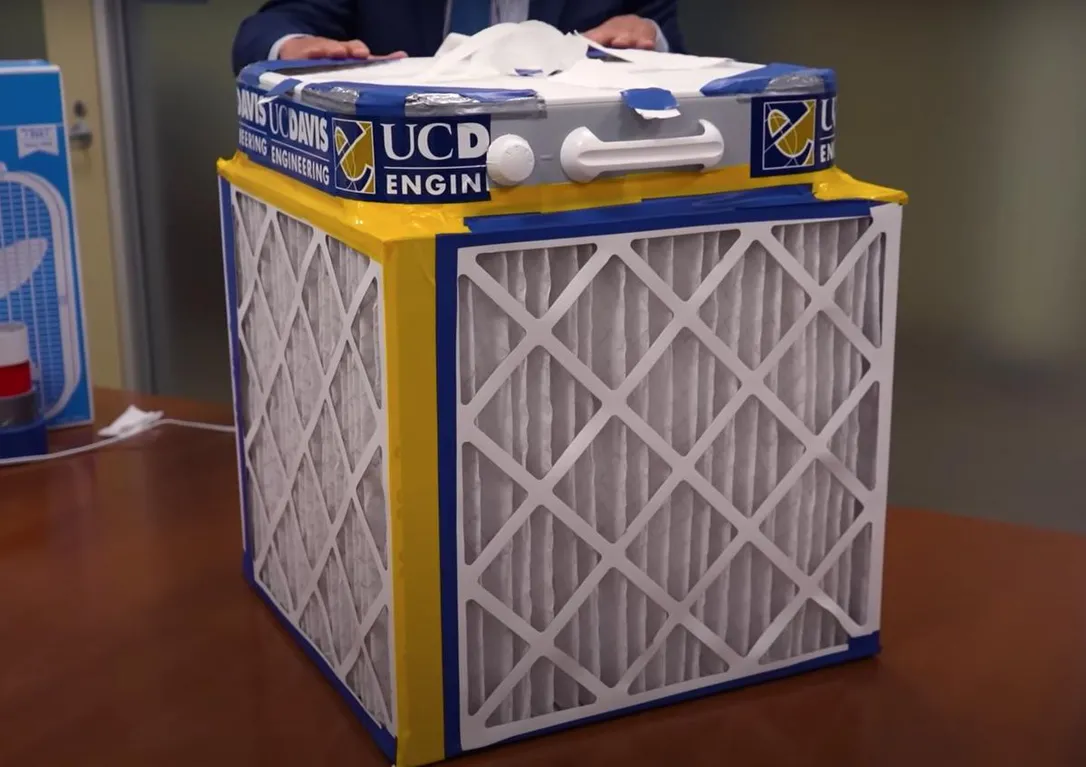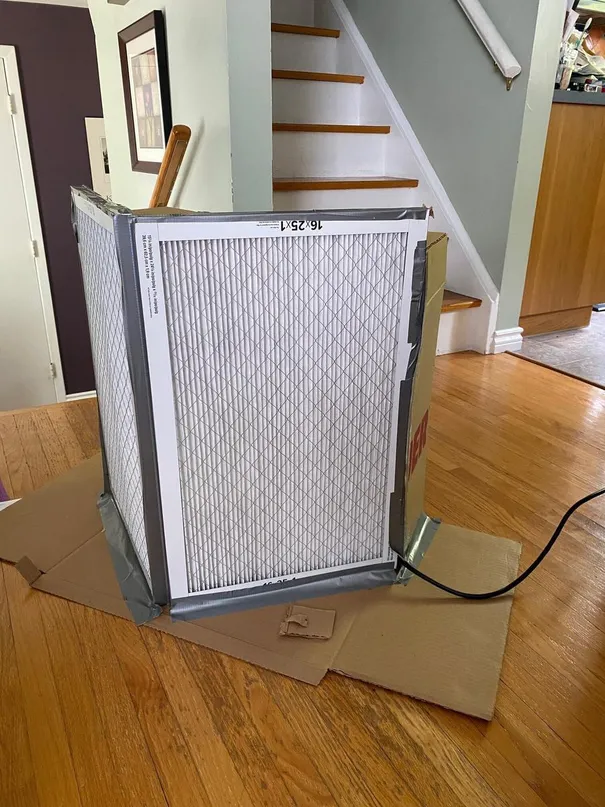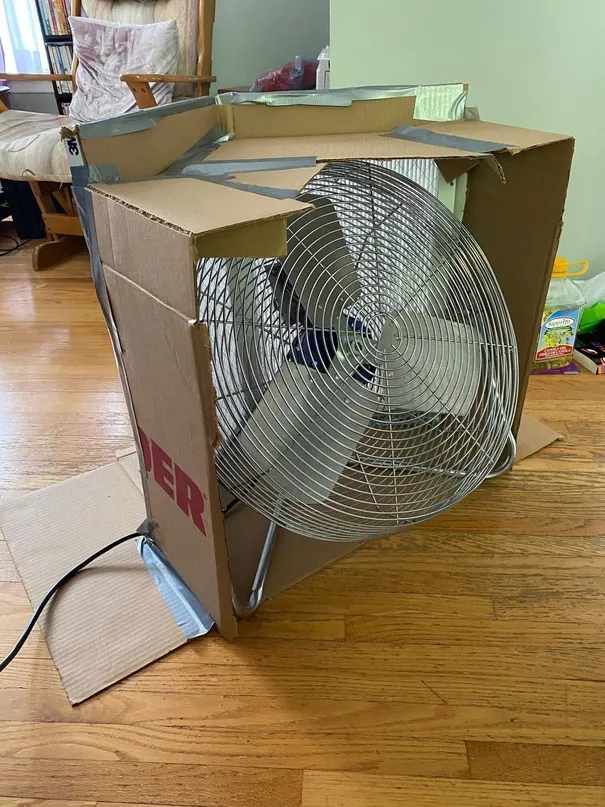As acrid wildfire smoke from Quebec and northeastern Ontario drifted to the GTA earlier this week, Kristin Iorio, who lives with asthma, could feel her chest constrict and her breathing become heavier.
So, she decided to build an air purifier herself in order to clean the air in her home in Ajax, Ont. Using nothing more than two air filters, a portable fan, some duct tape and cardboard, Iorio was able to assemble a makeshift purifier in less than 30 minutes.
After turning it on, the impact was noticeable.
“I can just say anecdotally, I coughed and wheezed less,” said Iorio. “It’s certainly worth the effort to build it.”
Homemade air purifiers making a comeback as wildfires rage
These DIY air purifiers were popularized during the COVID-19 pandemic, when people sought to mitigate COVID-19 transmission in indoor settings. Now, however, as wildfire smoke envelops large swaths of southern Ontario and the U.S. eastern seaboard, the devices have been thrust in the spotlight once again.
Iorio, who is also a chemical engineering PhD student at the University of Toronto studying air quality, said these homemade purifiers are a simple and effective tool to improve air quality and remove pollutants.
“The one that I made is very ugly,” she said with a chuckle. “I’ve seen much nicer looking ones … but it doesn’t need to be pretty to work.”
Corsi-Rosenthal box purifier effective for wildfire smoke
The efficiency of these DIY devices vary based on, among various factors, the type of fan and filters used, along with the size of the room. Iorio’s improvised purifier reduced the particle concentration inside the house by about 70 per cent, she said after measuring it with her particle monitor.
Perhaps the most well-known version of the DIY air purifier is the Corsi-Rosenthal box, cocreated during the pandemic by environmental engineer Richard Corsi and filter manufacturer Jim Rosenthal.
Informal tests conducted by Rosenthal found the device removed about 60 per cent of one-micron particles out of the air, and nearly 90 per cent of the 10-micron ones. For context, much of the air pollution produced by the forest fires are 2.5 microns or smaller.
But no matter the device, the mechanics are the same, explained Iorio: “It’s similar to how a mask would work … You’re forcing air through the filter, and that stops particles of varying different sizes.”
How to assemble a Corsi-Rosenthal box
To build the popular Corsi-Rosenthal box, here’s what you need: a box fan, the cardboard box for the fan, duct tape and four filters with a MERV (minimum efficiency reporting value) rating of 13 or higher.
First, build the four vertical walls of the DIY purifier using the four air filters, connecting them together using duct tape. Ensure the seals between the filters are air tight, as you want all the air flowing into the fan to pass through the filters.
Next, place the filters on the floor, on top of the cardboard box which contained the fan. Again, tape all four edges to create an airtight seal.
Finally, install the box fan at the top of the contraption and tape the corners to the filters.
“It’s just a square, flat box fan and you attach a filter to the side of it so that as the air is drawn through, and pushed out by the fan, it’s cleaned,” explained Jeff Brook, an associate professor at the University of Toronto’s Dalla Lana School of Public Health and Department of Chemical Engineering and Applied Chemistry. “It’s sort of that simple.”
While the device is safe to use — tests have shown it is very unlikely to cause a fire — Iorio recommends checking on the device regularly while in use to ensure the fan does not overheat.
If you don’t have an air purifier or are unable to assemble one, experts recommend turning on your air conditioner or fan. Ensure it’s set to recirculate indoor air and not pulling in smoke from outside. This air circulation can also help improve air quality.
Climate change increasing severity and frequency of forest fires
Currently, there are 432 active forest fires burning across the country, according to the Canadian Interagency Forest Fire Centre. This year, to date, there have been 2,358 fires, resulting in roughly 4.2 million hectares of area burned.
As of 11 a.m. on Thursday, the air quality health index for Toronto was a level 4, indicating a “moderate risk” to health, according to Environment Canada. That value was expected to peak later in the day at a level 7, which poses a “high risk” to health.
Due to climate change, these wildfires are becoming more severe and frequent, experts warn.
While it’s rare for large amounts of wildfire smoke to reach Toronto, as has happened this week, it’s going to “absolutely” happen more frequently, said Brook.
“We’re drying out and heating up our forests and our ecosystems,” he said. “That’s what climate change is doing and this is the result.”



